A new class of polymer that is transparent and hard like plexiglass but also stretchy with adhesive, self-healing, shape-memory and electrically-conducting properties has been created. Dubbed ‘glassy gels’, the material, which contains an ionic liquid solvent, could open up a wide variety of applications, possibly including batteries.
Glassy polymers, as the name suggests, are hard, stiff and brittle, and used to make many products, including water bottles and windows. By contrast, hydrogels are polymers swollen with water, which makes them soft and stretchy. Other kinds of soft polymer gels called ionogels have been made before with ionic liquids, which have been explored for their electrical conductivity.
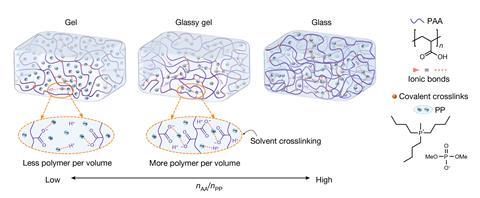
Tinkering with such ionogels has led to a group of researchers stumbling upon an unusual new material that combines the properties of both glassy and gel polymers, essentially making them hard and stretchy. ‘This is really a story of curiosity and drive by the student in my lab, Meixiang Wang, who led the work – she deserves all the credit,’ says Michael Dickey at North Carolina State University, US.
‘What makes this work unique is we found a ratio of ionic liquid to polymer that results in very hard materials, similar to plexiglass, despite containing more than 50% liquid,’ Dickey explains. ‘Yet the material can also be stretched, up to five times its original length, without breaking.’
Ionic interactions
Usually, polymers that are swollen with liquid become soft, stretchy and weaker because the liquid creates space between the material’s polymer chains. Dickey likens the mechanics to a mass of tangled thread. ‘If the ball of thread is very loose, it will feel stretchy but if the thread is tightly tangled, it will be hard to stretch,’ he explains.
The ionic liquid in the new glassy gels creates this space between polymer chains too, which makes them stretch when sufficient force is applied. However, the ionic liquid does something else; it attracts the polymer chains, creating electrostatic interactions, including strong non-covalent crosslinks between polymer chains, which makes the material strong. By inadvertently balancing these two effects, Dickey’s lab discovered glassy gels.
The team made gels using acrylic acid monomers joined together by methylene bisacrylamide – a standard crosslinker that forms polyacrylamide gels. For the ionic liquid component, tributyl(methyl)phosphonium dimethyl phosphate was used, while a photointiator molecule was incorporated into the mix in order to polymerise and cure the gel in one step at room temperature using UV light.
The resulting gels were transparent and composed of up to 54% liquid yet incredibly tough even when stretched. Experiments showed that the glassy gels were as tough as conventional thermoplastics, such as polyethylene, yet could be stretched up to six-and-a-half times their length. Normal glassy polymers typically break with just 0.1% strain. The glassy gels were also shown to quickly ‘self-heal’ to their original shape upon heating. Depending on the ratio and choice of monomer and solvent, the researchers found that glassy gels can become more glass-like or gel-like.
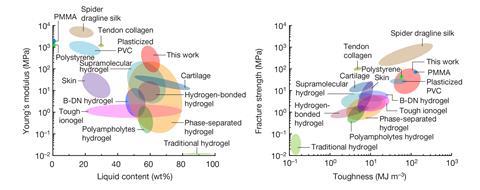
‘It was very exciting to realise we made a very tough material. We could only find one polymeric material that is tougher and that is spider dragline silk,’ says Dickey. ‘Another interesting thing about this material is that it is very adhesive. If you touched it, your finger would stick to it, which is unusual because usually hard plastics are not sticky.’
Surprisingly simple
‘It’s a really remarkable study,’ comments Ryan Hayward, who investigates active polymer materials at the University of Colorado Boulder, US. He explains that scientists are familiar with adding small amounts – less than 10% – of liquids, such as plasticisers, to glassy polymers to modulate their mechanical properties. ‘The fact that these strongly associating mixtures [in this work] maintain the high stiffness of glassy polymers while containing more than half liquid is really surprising and interesting.’
Since the discovery of glassy gels came by surprise, Dickey’s lab is still exploring what applications the material could have, as well as what other ionic liquids could work to optimise the various properties. Dickey speculates that it could be useful for batteries.
One immediate advantage, Dickey points out, is how simple it is to make glassy gels. ‘Plastics are everywhere, but they are first synthesised in chemical plants and then shipped somewhere to be melt processed into products,’ he says. ‘This material can be made by simply shining light on a liquid to cure it in a mould or by 3D printing it.’
‘We have only explored this principle with a small set of materials,’ says Dickey. ‘We’re excited to see how glassy gels can be used and are open to working with collaborators on identifying applications for these materials.’
References
M Wang et al, Nature, 2024, DOI: 10.1038/s41586-024-07564-0



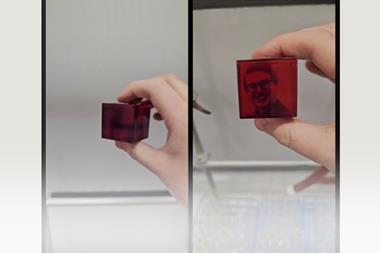

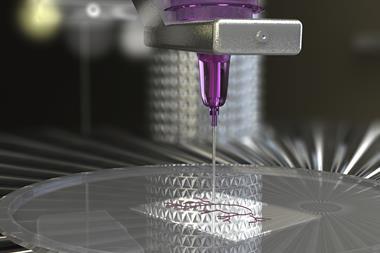
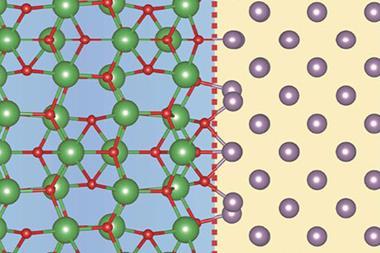
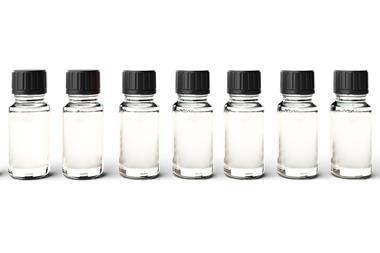
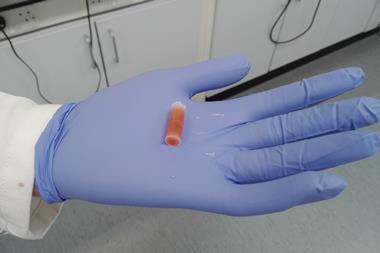
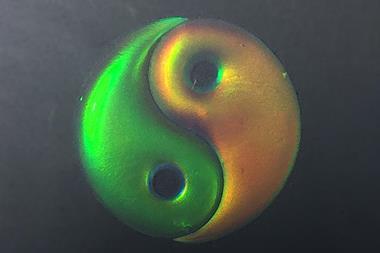

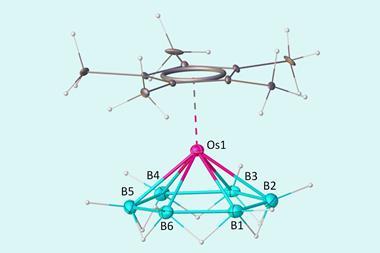
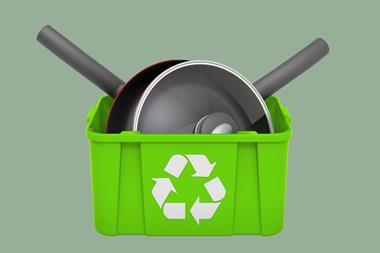
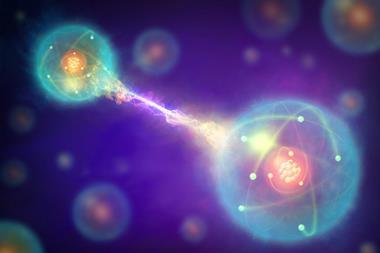

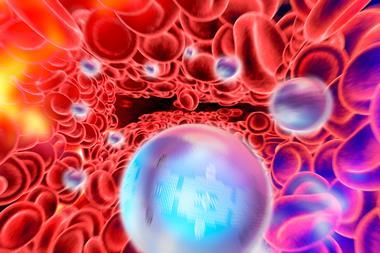





No comments yet